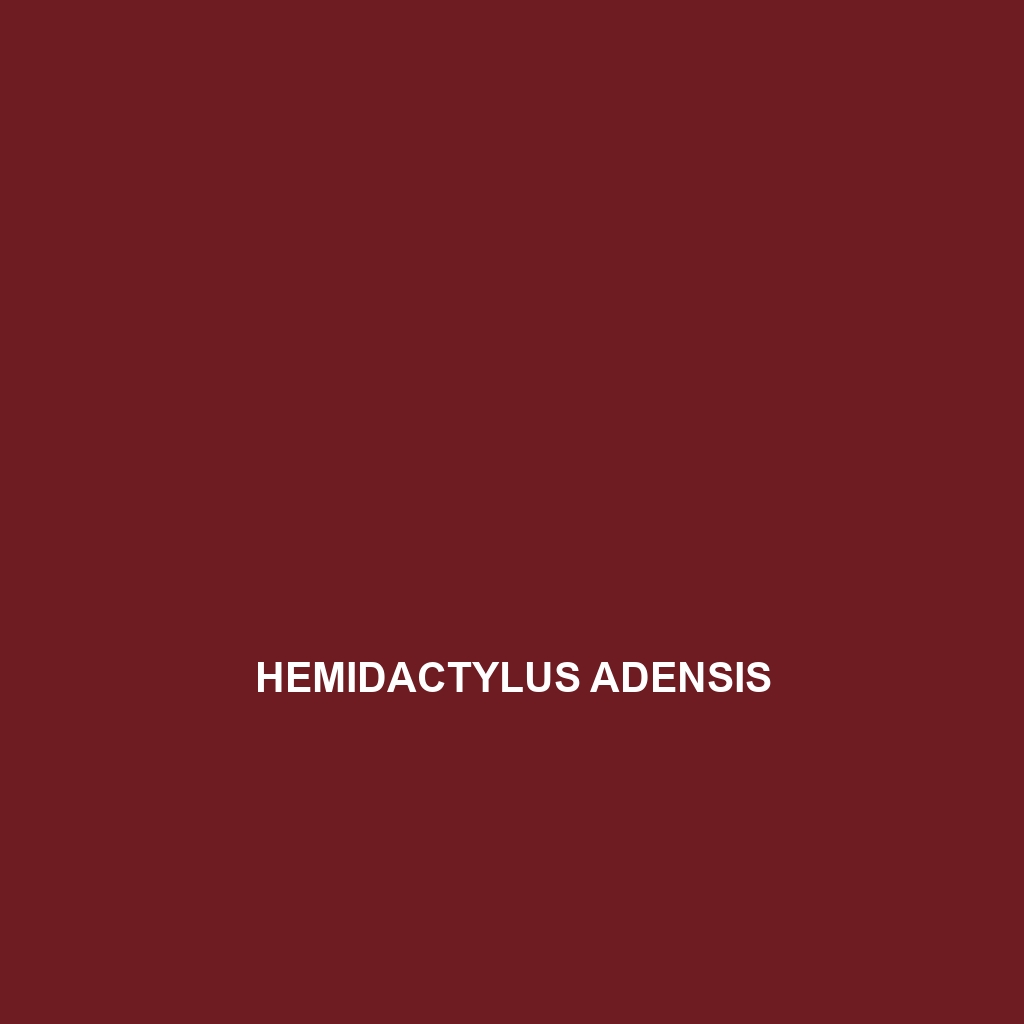Common Name
Hemidactylus achaemenidicus
Scientific Name
Hemidactylus achaemenidicus
Habitat
Hemidactylus achaemenidicus, commonly referred to as the Persian House Gecko, is predominantly found across the arid and semi-arid regions of the Middle East, particularly in Iran and Iraq. This species thrives in diverse habitats such as rocky terrains, deserts, and urban areas where it can find shelter in crevices and human-made structures. The Persian House Gecko is well adapted to warm climates as it prefers areas that don’t experience extreme cold. It can be found under rocks, inside buildings, and along city streets where ambient lighting attracts insects, its primary food source. The typical climatic conditions of its habitat include hot and dry summers and mild winters, making it a resilient species in its native range.
Physical Characteristics
Hemidactylus achaemenidicus exhibits notable physical features that distinguish it from other gecko species. Generally, it is a small to medium-sized gecko ranging from 6 to 10 cm in length. The body is flattened, aiding in its ability to navigate narrow spaces, while its toes are equipped with adhesive pads allowing for excellent climbing capabilities. The coloration of this species varies, generally presenting shades of gray or brown with dark spots, enabling effective camouflage against the rocky terrains of its habitat. One distinct characteristic of the Persian House Gecko is its large, bulging eyes which enhance its nocturnal vision, coupled with a relatively long tail that can regenerate if lost.
Behavior
Typically nocturnal, Hemidactylus achaemenidicus exhibits a range of behaviors that are fascinating to observe. This gecko is primarily solitary, coming together only during the mating season, which occurs in warmer months. Mating rituals include elaborate displays where males perform physical gestures to attract females. The Persian House Gecko is known for its agile movements and swift darting away when threatened, which aids in its escape from predators. They are also known to communicate through body language and vocalizations, such as clicking sounds that are often used during mating or territorial disputes. This species is also a competent climber, often seen navigating walls and ceilings in search of food.
Diet
An insectivore by nature, Hemidactylus achaemenidicus primarily feeds on a variety of insects including crickets, moths, and other small invertebrates it can capture. Its feeding habits are opportunistic; it hunts during the night when its prey is most active. The diet may also include small arthropods and occasionally fruits, showcasing a slight omnivorous tendency. The gecko’s ability to consume a wide range of insects plays a vital role in controlling pest populations, making it an important player in the ecosystem.
Reproduction
The reproductive cycle of Hemidactylus achaemenidicus is characterized by a unique breeding strategy. Mating typically occurs from late spring to early autumn, aligning with warmer weather conditions. After successful mating, females lay 2 to 4 eggs per clutch in secluded locations, such as under rocks or within wall crevices. The gestation period lasts about 60 to 90 days, after which the eggs hatch into miniature versions of adults that are capable of independent survival. Parental care is limited, with the young geckos instantly dispersing to find their own territories.
Conservation Status
Currently, Hemidactylus achaemenidicus is classified as Least Concern on the IUCN Red List. This status is attributed to its wide distribution and adaptability to various habitats, including urban environments. However, it faces challenges due to habitat destruction and urbanization, which may threaten its population in some areas. Conservation efforts are focused on habitat preservation and raising awareness about the role of such species in maintaining ecological balance.
Interesting Facts
One intriguing fact about Hemidactylus achaemenidicus is its historical significance; this species is believed to have ancient roots linked to the regions it inhabits. Its ability to regenerate its tail when lost is not only a survival tactic but serves as a fascinating topic of study in science, particularly in understanding regeneration processes in reptiles. Furthermore, its presence in urban settings makes it a common sight, often leading to coexistence with humans.
Role in Ecosystem
Hemidactylus achaemenidicus plays a crucial role in its ecosystem as a predator of insects, contributing to the regulation of insect populations. By controlling pests, it indirectly supports agricultural activities in human-dominated environments. As a prey species for larger predators, such as birds and snakes, the Persian House Gecko also plays an integral part in the food web. Its adaptability and ecological interactions ensure that it remains a key component of the habitats it occupies, promoting overall biodiversity and ecosystem health.
